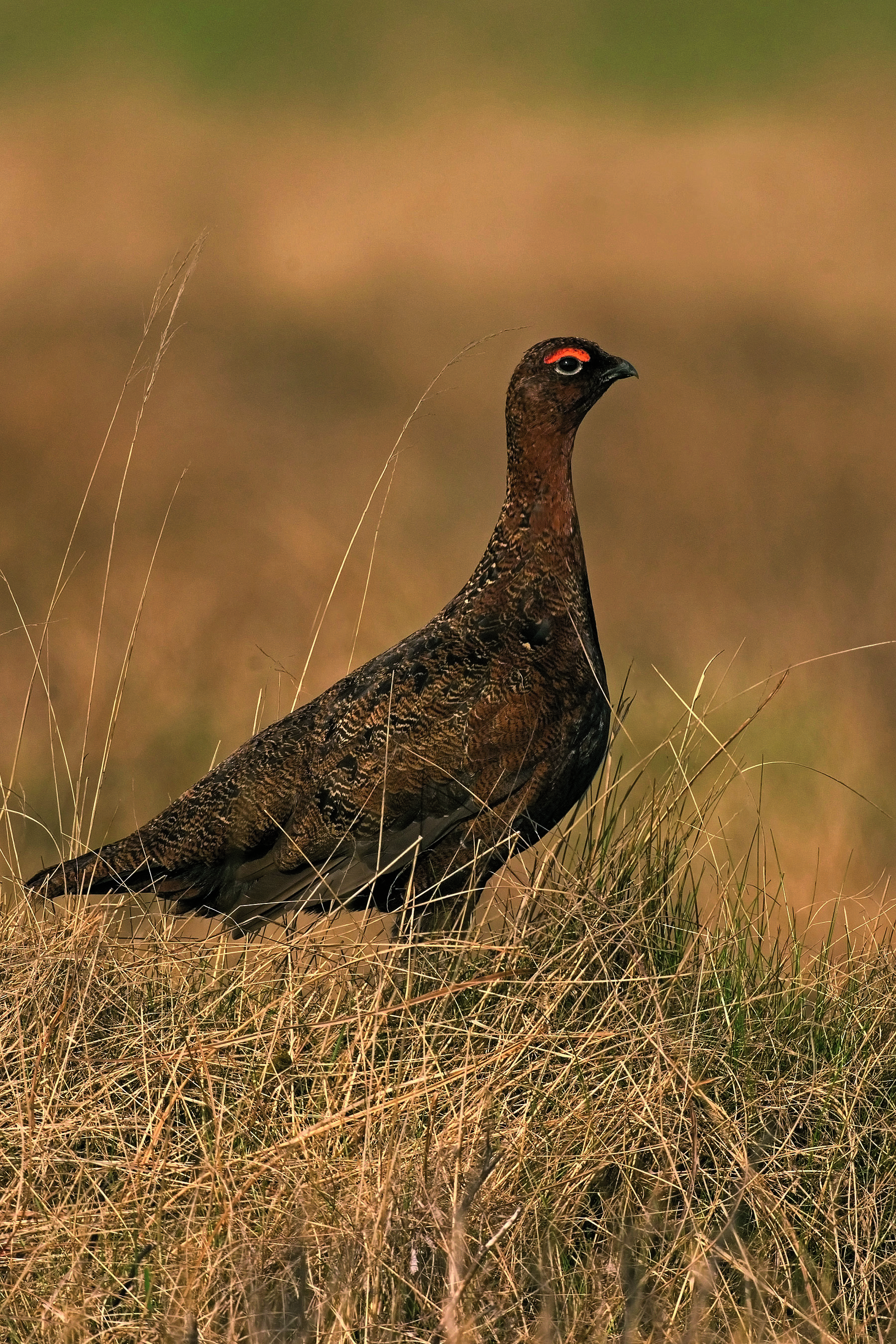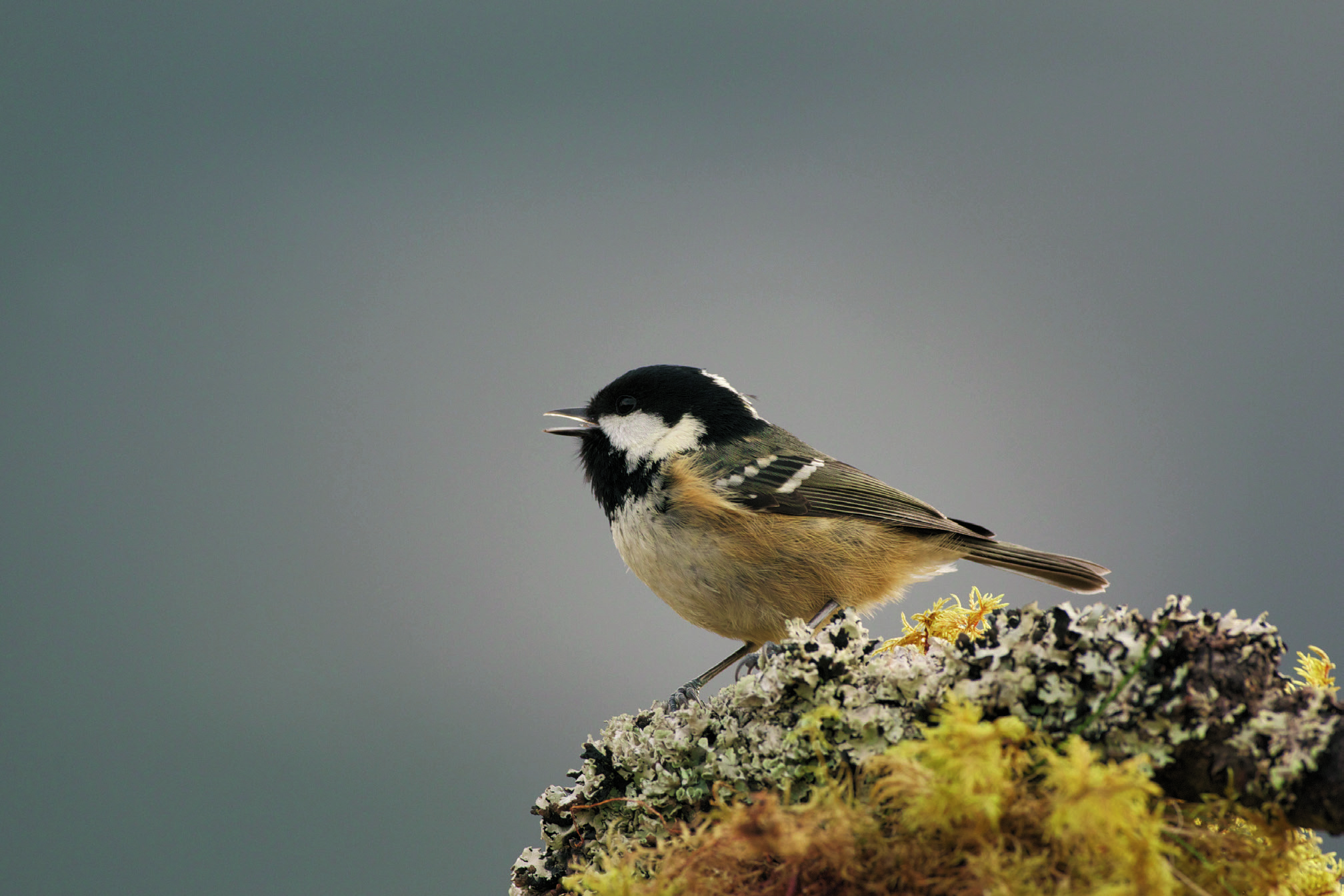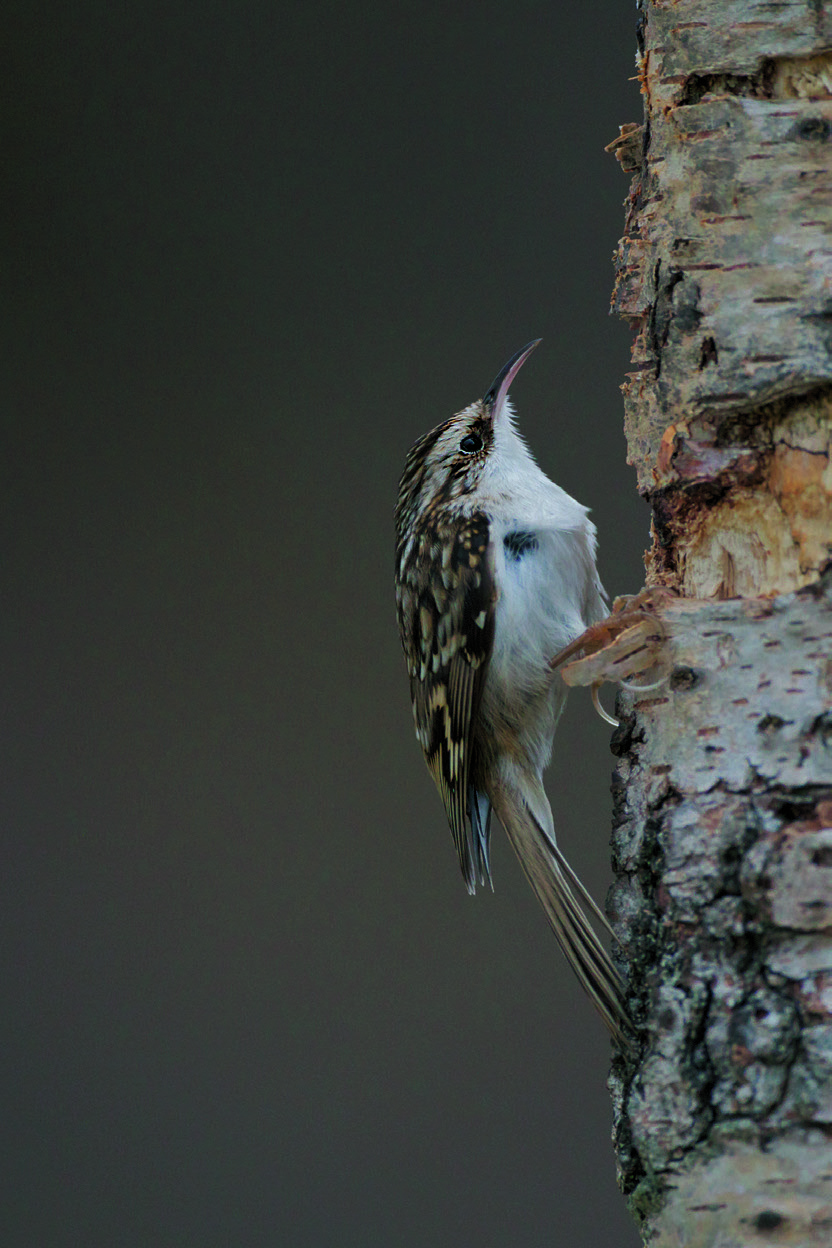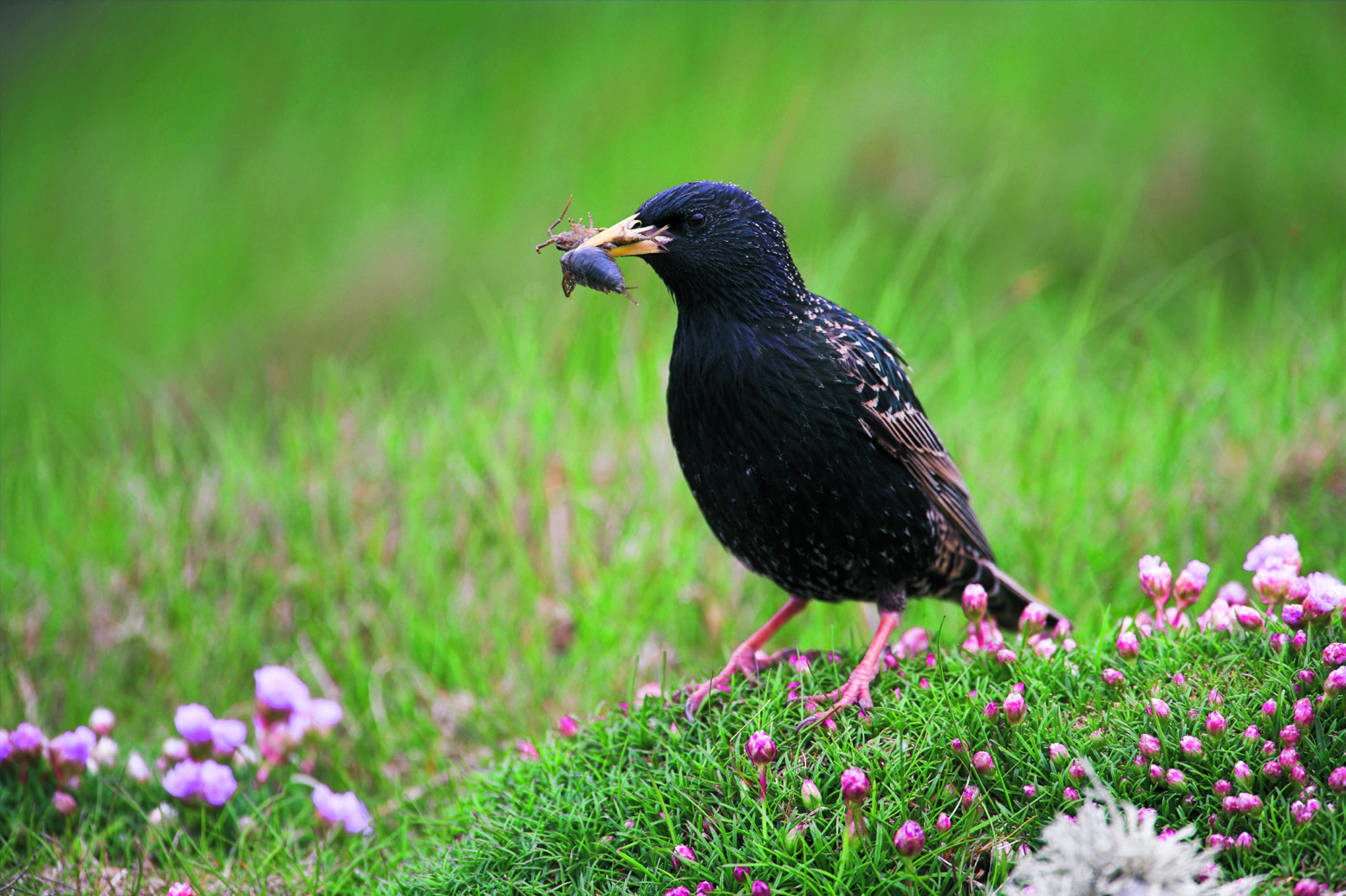Mention endemic birds to most birders, and the chances are they’ll think of species-rich South American hot-spots, or perhaps isolated islands with rare and range-restricted specialities waiting to be ticked off. However, discoveries also await the birder at home, as Britain and Ireland – in common with many other islands – have an array of endemic bird forms of their own. Though most are certainly not ‘splittable’, it is well worth trying to see and identify these subtle forms, at the very least to enrich your understanding of our islands’ evolutionary place, as well as to test your field skills.
Subspecies limits
Using Knox and Parkin (2010) as an up-to-date baseline guide, there are currently 32 accepted subspecies restricted to Britain and Ireland, including two that may be potential future splits.
As far as the term’s taxonomic ranking goes, a subspecies can be generally defined as a geographically discrete subdivision of a species. A subspecies is often hard to differentiate from others, and differences can be subtle or clinal – that is, changing gradually across the gradient of a landmass.
Most taxonomists think that the dividing of a greater species into smaller definable parts is useful to describe a species’ variation and its evolutionary and geographical state. Bird subspecies can differ in body size, measurements and coloration, but sometimes subspecies names are used to describe birds which vary continuously across their range. For consistency’s sake, ‘subspecies’ is taken here to mean populations where characters are strictly defined or those where zones of intergradation are very narrow, as per Monroe (1982).
Some are debatable under these strict terms, but most can be regarded as Britain and Ireland’s true endemics.
Red Grouse
Lagopus lagopus scoticus is our endemic form of the Holarctic Willow Grouse, and Irish birds are also sometimes separated as hibernica. Some genetic analyses support a split between Red Grouse and Willow Grouse into separate species, as an apparent 3.1 per cent difference in certain DNA sequences equals that of many sister species among the Galliformes; other differences include habitat preferences. However, a 2006 study found much genetic similarity between Scottish, Irish and Norwegian birds, so more work is needed before this potentially good split is confirmed.
Scoticus males have entirely reddishbrown plumage all year, not moulting into white winter dress like continental Willow males. Females are a more grey-brown than males, but both sexes have white underwing coverts and many individuals show white barring on the belly.

Distinct from the Holarctic Willow Grouse in many respects, Red Grouse arguably deserves recognition as a full species. Scottish and English birds are named scoticus; those in Ireland are sometimes separated as hibernica. Photo: Steve Young (www.birdsonfilm.com).
Scottish Ptarmigan
Found only in Scotland, Lagopus muta millaisi has greyer upperparts in summer than nominate, while winter birds often retain darker feathering in contrast to other forms. Ptarmigan moults three times annually, but female millaisi in particular can have grey-speckled heads all year round. Such variable patterning is probably an adaptation to Scotland’s more patchy snow cover.
British Black Grouse
Tetrao tetrix britannicus is restricted to Britain. The males are extremely similar to nominate, but hens have a more reddishbrown hue to their body feathers.
British Great Spotted Woodpecker
No longer recognised by most world authorities, Dendrocopus major anglicus is expanding in number and range, even colonising Ireland, where both nominate and anglicus were previously recorded as vagrants. The Scottish population was virtually wiped out in the 19th century, and it is sometimes suggested that these represented another endemic subspecies, now extinct. Anglicus has a more slender bill and is slighter in build than nominate. It is duller plumaged with a browner cast to the upperparts, face and scapulars.
British Lesser Spotted Woodpecker
Dendrocopus minor comminutus is restricted to England and Wales, with a much reduced population in recent years. While continental birds tend to be cleaner looking with more streaks to the breast and belly, sedentary British birds lack obvious streaking and average dirtier and buffier in colour on their underparts.
British Chough
Nominate Chough Pyrrhocorax pyrrhocorax pyrrhocorax is sparsely distributed around the western coasts of Britain and Ireland. ‘Our’ birds differ only slightly in proportions from other subspecies
overseas.
Irish Jay
Endemic to Ireland, Garrulus glandarius hibernicus represents the local form of a very variable trans-Eurasian species with numerous subspecies. All forms occurring in Britain and Ireland are part of the nominate subspecies group, but hibernicus has more reddish-brown tones which create an overall darker and duller impression. British birds are rufitergum, a subspecies also occurring in northern France; so-called Scottish ‘caledonicus’ is no longer considered valid.
British Blue Tit
With many of the more exotic island subspecies of Blue Tit now being split by many authorities, it is tempting to imagine that the very abundant British and Irish form Cyanistes caeruleus obscurus – also found on the Channel Islands – might have evolved consistent differences. However, they are subtle: obscurus only shows 10 per cent shorter wings and is slightly smaller overall than nominate, with a darker blue cap, darker green mantle, duller and thinner white wing markings and somewhat obviously dirtier, more green-tinged yellow underparts than caeruleus.
British Great Tit
The endemic form Parus major newtoni expanded rapidly in the mid- to late- 20th century. Birds in the north and west are the ones with the largest beaks and greenest backs; the closer one gets to the south and east coasts, the less distinct are our Great Tits from nominate, suggesting a cline little affected by island isolation.
Scottish Crested Tit
Restricted to the Caledonian pine forests of Scotland, has never been recorded south of the border, despite the occasional historical occurrence of Scandinavian and Western European birds as vagrants (see Birdwatch 214: 28-31). Wandering scoticus have been reported in Scotland, but none more than 60 miles from the core range. Scoticus is consistently darker and smaller than nominate.
British and Irish Coal Tits
Both of Britain’s Coal Tit subspecies are part of a group with nominate, forming a continuum of sorts across Eurasia from Japan. Periparus ater britannicus is the sedentary British and Northern Irish form, having upperparts strongly washed with a greyish olive-brown tone, giving a ‘dirtier’ appearance than the blue-grey-backed nominate birds that occasionally reach here in autumn and winter.
Hibernicus is found over most of Ireland except the extreme north-east, where it is replaced by britannicus. Irish birds resemble British, but a pale yellow tint can be seen on the underparts and ear coverts of freshly moulted birds. There are also said to be minor differences in song.

British Coal Tits belong to the endemic subspecies britannicus, while Ireland boasts another endemic form, hibernicus. A third taxon, nominate ater from the Continent, occurs on passage, and has even been suspected of breeding in England after irruptions. Photo: David Featherbe.
British Willow Tit
Poecile montana kleinschmidti is the somewhat distinctive British subspecies of Willow Tit, one of our most endangered bird forms. The British taxon has a different ecology to continental birds, specialising in wet woodland and riverine trees and scrub. Kleinschmidti is the darkest and smallest subspecies, with upperparts averaging browner than continental forms, and flanks and rear ear coverts washed with rufous brown.
British Long-tailed Tit
Aegithalos caudatus rosaceus is the British form. However, invasions of the nominate ‘Northern’ Long-tailed Tits and those of the Western European europaeus are believed to cause a limited amount of intergradation. Rosaceus has a broad though diffuse lateral crown stripe, is markedly smaller and dirtier-looking than europaeus, has darker ear coverts and underparts and a broad black eyestripe on its dark-flecked head.
British Treecreeper
Certhia familiaris britannica is very similar to central European macrodactyla, but our form has darker, more rufous upperparts. Britannica’s underparts are a brighter white, while the rufous wash to the flanks and undertail area may help separate it from wandering nominate birds. Its supercilium and underparts are duller but, interestingly, a rear view reveals a relative lack of thin white streaks on the head and back, as well as less contrasting wing coverts.

Britannica Treecreeper, one of four subspecies in Western Europe, is endemic to Britain and Ireland. Photo: David Featherbe.
Wren subspecies
A recent taxonomic revision of the formerly Holarctic ‘Winter’ Wren (Drovetsky et al 2004) split it into three clades, which were declared species by the American Ornithologists’ Union, a decision now being widely adopted. However, the analysis sampled but one bird from England, which sat among a European clade that was sister to a Caucasian group. Four subspecies have been named from the Scottish islands alone, all having longer bills and progressively longer feet, and averaging darker on the upperparts than nominate.
Troglodytes troglodytes indigenus is very common throughout mainland Britain and Ireland, with an estimated population of more than 17 million birds. It differs from the nominate form by its longer legs and larger feet.
Shetland Wren T t zetlandicus is found throughout Shetland except Fair Isle, and has a breeding population of 1,500 to 3,000 pairs. It looks almost like a separate species superficially, with its richer brown coloration and extensive barring on the upperparts and underparts. Fair Isle Wren T t fridariensis is one of the world’s most limited range and least numerous bird forms, with a population of 25 to 40 pairs. It differs from zetlandicus in song and has a more obvious supercilium and paler underparts.
Two other distinct forms occur, this time in the Outer Hebrides. Resembling Shetland’s subspecies more than the mainland form, Hebridean Wren T t hebridensis is found on all the Outer Hebrides except St Kilda, with a healthy population of 5,000-10,000 pairs. This form has more buff on its underparts. Oft-touted as the most likely form for specific status, St Kilda Wren T t hirtensi has a population of about 225 pairs. It is particularly dark-backed and densely barred, and is closely associated with Puffin burrows, which provide most of the shelter and insect fodder on the islands.



Wrens best exemplify the fascinating diversity of subspecies in Britain, with no fewer than five endemic forms. The widespread indigenus (left) occurs from Orkney, where this image was taken, southwards right across Britain and Ireland. Just a few miles to the north lies the entire three-square-mile world range of fridariensis (centre), better known as Fair Isle Wren, while in the rest of Shetland is the distinctive zetlandicus, Shetland Wren (right). Other island forms are found in the Outer Hebrides (hebridensis) and on St Kilda (hirtensis), this last subspecies perhaps being the strongest candidate for elevation to species status. Photos (left to right): Steve Young (www.birdsonfilm.com), Rebecca Nason (www.rebeccanason.com) and Oliver Smart (www.smartimages.co.uk).
Shetland Starling
Sturnus vulgaris zetlandicus has sturdy, thick legs, a broad-based bill and longer wings than the more familiar subspecies. Juveniles have a sooty ground colour, making the black chin spots and white belly streaks more obvious. However, zetlandicus also forms a half-way house between vulgaris and the Faroe Islands form faroensis, and a recent genetic study found that zetlandicus was rather ill defined, sharing most of its genes with other north-western European populations (Neves et al 2009). The same study also found that Spotless Starling could conceivably be treated a subspecies of Starling.

Starlings in Shetland are separated as zetlandicus, and as the species is largely resident in Britain, there is probably limited gene flow between this population and those on the mainland (though birds on Fair Isle are said to be somewhat intermediate). Photo: Oliver Smart (www.smartimages.co.uk).
British and Irish Dippers
Cinclus cinclus gularis, present in most of Britain except western Scotland, is one of two accepted resident subspecies. It has a fairly bright reddish-brown belly colour, extending partially onto the flanks. Hibernicus – found in Ireland and Western Scotland – has a very limited rufous belly patch, though females of most subspecies are very difficult to separate in the field. A recent genetic analysis (Hourlay et al 2008) included Irish Dipper and found little differentiation between this and other European subspecies.
Hebridean Song Thrush
Turdus philomelos hebridensis occurs on Skye and the Outer Hebrides, with similar birds also present in Ireland, and there is something of a gradation into the mainland and near-continent’s clarkei, with
intermediates present in western Scotland. Its upperparts are less rufous and lack the olive tone of philomelos. Hebridensis is as dark on the chest and flanks as on its upperparts, an effect created by
the grey-brown tone present, while its underparts are generally suffused with buff and boldly streaked with black. The underwing also has a darker rufous colour than other forms.
British Robin
Erithacus rubecula melophilus is Britain’s national bird, and fittingly also one of our island endemics. Though named on minor biometric and coloration differences, its approachable behaviour may differentiate it more. It has a richer rufous tone to its upperparts and uppertail coverts. The rear of the underparts is also browner than nominate, and the face, throat and breast a richer orangey-red.
Hebridean Dunnock
Prunella modularis hebridium is another Hebridean speciality, but is replaced on the British and Irish mainland by occidentalis, which ranges into western France. Hebridium is darker than nominate and occidentalis, with each facet of the species’ cryptic plumage varying in some way: the rufous upperparts are richer and the grey head darker with an almost purple hue, while the black streaks are also deeper in tone; the belly is also a more sullied white. The subspecies can also be viewed as the end of a European cline, and is also found on Scotland’s west coast.
British Meadow Pipit
Though the species is considered clinally monotypic by most authorities, Parkin and Knox (2010) maintain the endemic status of Anthus pratensis whistleri, originally named on the basis of its more rufous underpart tones. It breeds only in Ireland and western Scotland. While most British birds winter in the Iberian peninsula, whistleri probably doesn’t move as far, though there have been few ringing recoveries to confirm this one way or the other. With Meadow Pipit being such a variable species as a whole, it may be simpler and safer to disregard this as a diagnosable form in future, at least regarding field identification.
British Chaffinch
Fringilla coelebs gengleri is the Chaffinch form that occurs in both Britain and Ireland, and is one of our commonest birds, with numbers being boosted in winter by nominate continental birds. The form has all the hallmarks of the major coelebs subspecies group, but both sexes average somewhat darker on the underparts, with a brown wash extending to the face.
Scottish Linnet
The autochthona subspecies of Carduelis cannabina is not recognised by all authorities, as this longer-winged and more slender-billed form is likely to be the end of a continent-wide cline. With a population of up to 90,000 pairs, it is most abundant in eastern Scotland, though this positioning also opens it to potential intergradation.
British Twite
Carduelis flavirostris pipilans is found in Scotland, Wales, Ireland and northern England, though up to 94 per cent of the population is restricted to Scotland in the breeding season. It is darker overall and warmer-looking than nominate, and its streaking extends further onto the flanks. The lighter belly patch of flavirostris is not found on most British birds, and there is an orange-brown tinge to the wing-bar. A tendency towards slightly heavier black streaking and duller brown upperparts led to birds on the Hebrides being named bensonorum, but this form is no longer widely recognised.
British Bullfinch
This species varies considerably (and clinally) in size and intensity of colour within Europe. Pyrrhula pyrrhula pileata is found in both Britain and Ireland and, though variable, typical birds should be duller than European individuals, with females having more olive-brown on the upperparts and somewhat browner underparts.
Scottish Yellowhammer
Emberiza citrinella caliginosa is found in northern and western Britain and in Ireland, intergrading into nominate in England. It is generally at the brighter end of a clinal spectrum, with warm rufous scapulars and the head in fresh plumage showing particularly dark brownish-green markings, and birds overall having a greener tinge to everywhere except the belly. It is best to remember that many individual birds of endemic subspecies will not be identifiable in the field unless on core breeding territories, but it is certainly fun to try and work out the origins of a bird or flock using subspecific identification criteria.
• Drovetsky, S V, Zink, R M, Rohwer, S, Fadeev, I V, Nesterov, E V, Karagodin, I, Koblik, E A, and Red’kin, Y A. 2004. Complex biogeographic history of a Holarctic passerine. Proceedings of the Royal Society B 271: 545-551.
• Forrester, R W, Andrews, I J, McInerny, C J, Murray, R D, McGowan, R Y, Zonfrillo, B, Betts, M W, Jardine, D C, and Grundy, D S (eds). 2007. The Birds of Scotland. The Scottish Ornithologists’ Club, Aberlady.
• Freeland, J, Allen, D, and Anderson, S. 2006. DNA Analysis of Red Grouse: an Analysis of Taxonomy and Genetic Diversity. Final report submitted to the Environment and Heritage Service, Department of the Environment, Northern Ireland.
• Hourlay, F, Libois, R, D’Amico, F, Sarà, M, O’Halloran, J, and Michaux, J R. 2008. Evidence of a highly complex phylogeographic structure on a specialist river bird species, the dipper (Cinclus cinclus). Molecular Phylogenetics and Evolution 49: 435-444.
• Lewis, A J G, Amar, A, Charman, E C, and Stewart, F R P. 2009. The decline of the Willow Tit in Britain. British Birds 102: 386-393.
• Monroe, B L. 1982. A Modern Concept of the Subspecies. The Auk 99: 608-609.
• Neves, V C, Griffiths, K, Savory, F R, Furness, R W, and Mable, B K. 2010. Are European starlings breeding in the Azores archipelago genetically distinct from birds breeding in mainland Europe? European Journal of Wildlife Research 56: 95-100.
• Parkin, D T, and Knox, A G. 2010. The Status of Birds in Britain and Ireland. Christopher Helm, London.
The Status of Birds in Britain and Ireland by David T Parkin and Alan G Knox has more information on endemic and other subspecies, and you can save £10 – order from the Birdwatch Bookshop http://www.birdwatch.co.uk/store/product.asp?prod=687.


